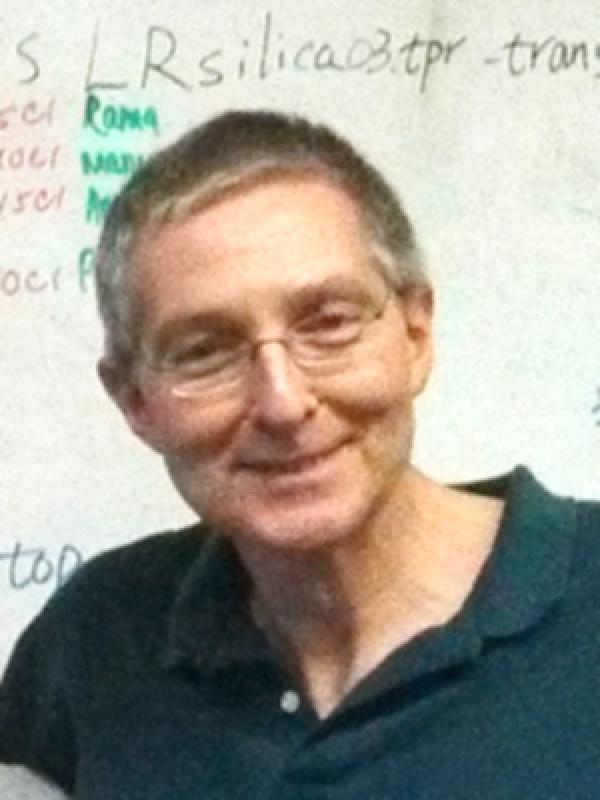
Sherwin Singer
Professor
2106 Newman and Wolfrom Laboratory
100 W 18th Ave
Columbus, OH 43210
Areas of Expertise
- Chemistry and Biochemistry
Education
- PhD, Chemistry, University of Chicago
Research Description
The research performed in our group is a combination of theoretical and computational chemistry aimed at understanding the behavior of biomolecules, their aqueous environment, and materials with which biomolecules interact.
Computer simulation of the stripe labyrinth phase of a phospholipid monolayer monolayer
A long-standing interest is in the properties of surfactant molecules, typically phospholipids, which reside at the air-water interface. These molecules spontaneously form spatially modulated phases regular or irregular arrays of bubbles, elongated domains or stripes. We have developed theories that predict how the morphology of the patterns depends on surfactant concentration and polarity.
We have devoted considerable effort to understanding the properties of water in molecular clusters, in the condensed phase, and more recently near proteins. Hydrogen bonding in water is a fascinating topic because very rich behavior arises from the seemingly simple H2O molecule. Extending what we have learned from studying water clusters, we have been able to develop methods to understanding hydrogen bond order-disorder phase transitions among the various phases of ice. Most recently we have initiated a program in collaboration with Professor Dongping Zhongs research group to examine the dynamics of waters near photo-excited tryptophan resides.
Another recently initiated research area concerns the behavior of water and biomolecules in biomedical devices. We have developed analytic theory and performed non-equilibrium molecular dynamics simulations of electroosmotic flow, the overall motion of fluid induced by electrophoresis of dissolved ions, in a channel of a dimension of several nanometers. Electroosmotic flow is a very promising technique for inducing controlled motion of biological fluids in lab on a chip devices. Our findings indicate that specific molecular solvation forces modify the ion distribution within a nanochannel from that predicted by Poisson-Boltzmann theory, but once this distribution is corrected the equations of hydrodynamics are valid down to remarkably small channel sizes.
Molecular dynamics simulation of a tripeptide within a nanoscale channel. The channels walls are composed of amorphous silica
